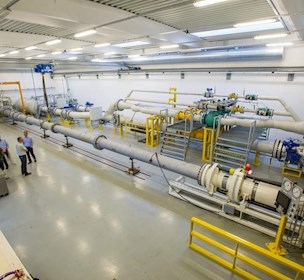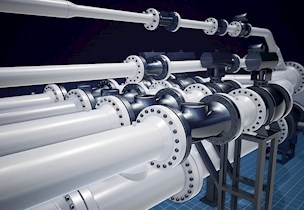Uncertainty explained: Class half gas meters
Most calibration laboratories in the world don’t have uncertainty levels adequately low to perform accredited calibrations of a class half meter. How does this affect the gas metering industry?
While the gas market has required improved criteria for meters and therefore their calibration, calibration facilities have not always been able to keep up with these growing needs.
As a calibration facility, we often get questions on the performance of a meter, and whether it complies with guidelines like AGA and ISO. Next to this, we are often asked how to prove a meter is really performing on class half .
But how to prove this in practice, and how does it involve the uncertainty of the laboratories? Let us try to explain.
Uncertainty explained: How to calculate the laboratory CMC?
0,5% MPE – theory and practice
MPE (Max Permissible Error) indicates the maximum permissible error for a calibration. A 1/3 MPE indicates that the uncertainty level of a laboratory must be lower/better than 1/3 of the MPE.
As for the meters applied in the custody transfer market, the performance has become better over the years. While class one was considered state of the art some decades ago, most manufactures have class half meters in their portfolio today.
Meters, and other measuring instruments, are divided in several tolerance classes that each have different uncertainty levels. So, if a MPE is expected to be 0,5%, the uncertainty level of the laboratory (CMC) may not exceed 1/3*0,5% = 0,166%, given no additional uncertainty form the meter itself.
Most laboratories in the world don’t have uncertainty levels this low, and cannot, in theory, perform calibrations of a class half meter. However, calibrations at this level are performed worldwide daily anyway.
Impossible to meet the requirements for uncertainty
When the accredited uncertainties of the laboratories are assessed, only a few laboratories meet the 1/3 MPE requirements with uncertainty levels lower than 0,17%. And even these laboratories can’t uphold the uncertainty within its full calibration area. Important to note here is that the best uncertainty is not the uncertainty of the whole scope of accreditation.
When calibrating at low pressure and flow, the uncertainty mostly increases, making it impossible to calibrate certain classes of meters according to the defined 1/3 MPE requirements. This means that the requirements for uncertainty levels today are in many cases not possible to meet and prove in the calibration laboratories.
When a gas meter is calibrated, we can find a uncertainty of the laboratory and a calibration uncertainty in the certificate. The calibration uncertainty will always be higher or equal to the laboratory uncertainty.
That will happen if the calibration uncertainty is higher than the MPE? Do we take care of this gray zone area?
How to solve this?
Today, there is not an easy fix for this problem.
Most laboratories work on achieving better performance to give uncertainties as low as possible, on a range as wide as possible. This will take time, and a lot of work.
For the time being, to ensure future calibrations within the 1/3 MPE for all meter classes, the requirements are to be adjusted to the uncertainties that are possible to achieve in the laboratories. This implies that class half meters can perform as class one on operation areas.
In the meantime, the gas metering industry will meet situations where a laboratory cannot uphold its uncertainty level and calibration according to the requirements.
Want to know more about uncertainty and class half meters?
- We are always open for discussions - contact us.
- Sign up to receive news and articles about gas flow calibration
- Learn more about Calibration.



